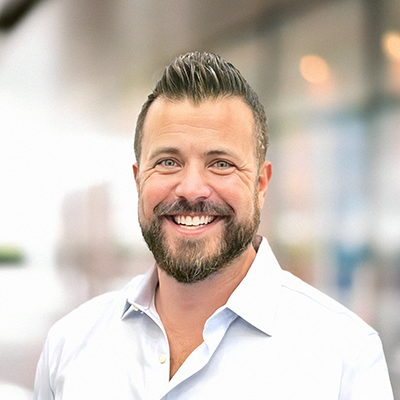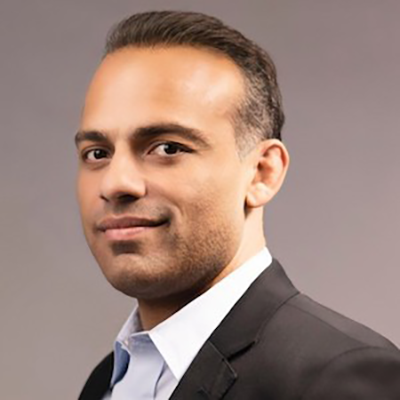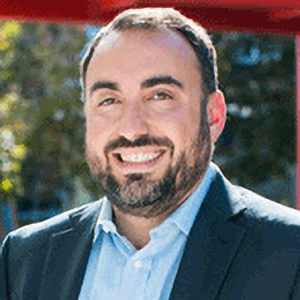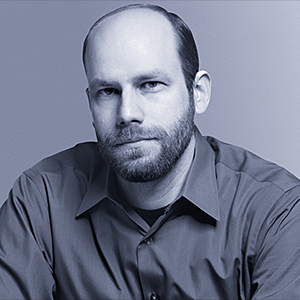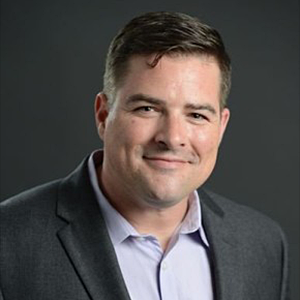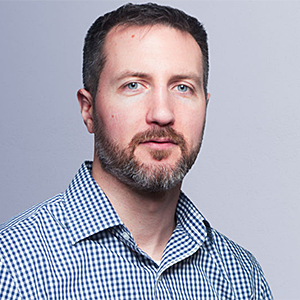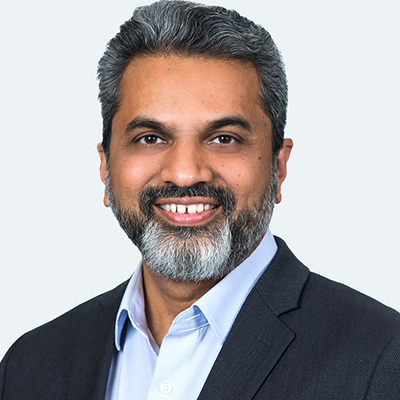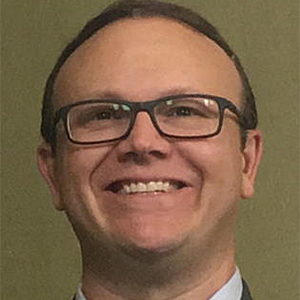| 8:00 - 9:00 AM |
Networking Breakfast |
| 9:00 – 9:15 AM |
Welcome and Introductions
- Jeff Moss, Founder, Black Hat + DEF CON
- Steve Wylie, General Manager, Black Hat
|
| 9:15 – 9:45 AM |
Keynote: Securing the New York Times - The Truth Is Worth It
The New York Times has an important mission: to seek the truth and help people understand the world. Journalists at The Times last year reported from more than 160 countries, publishing more than 150 articles per week, and reaching more than 150 million readers each month. Ensuring that the newsroom can work securely is essential to the company's mission. Our challenges include: a fast-paced environment, a remote workforce, and varied control over endpoints and infrastructure. This presentation shares insight into securing a unique environment whilst facing diverse threats—from everyday concerns to sophisticated actors.
- Runa Sandvik, Senior Director of Information Security, The New York Times
|
| 9:45 – 10:15 AM |
Shifting Culture to Better Secure the Department of Defense, One Asset at a Time
Three years ago, a "SWAT team of nerds" at the Pentagon formed an alliance with the global hacker community to discover and disclose vulnerabilities under the federal government's first bug bounty program. Today, the Defense Digital Service's (DDS) 'Hack the Pentagon' program has run nearly twenty bug bounties across the Department of Defense, engaged thousands of ethical hackers, and uncovered more than 10,000 vulnerabilities. The program is being replicated across government and is helping feds rethink many of the government's security approaches by going beyond just checklists and improving the overall security of systems at scale. In engaging more mission-critical systems, DDS continues to expand the definition of what can be "bountied" at the Department of Defense.
Hear from DDS Digital Service Expert and former Defense Media Activity CISO Alex Romero and renowned hacker Jack Cable. Alex has spent over a decade championing modern security approaches at the DOD, including supporting the launch of the Hack the Pentagon pilot and Department-wide vulnerability disclosure policy. As a hacker, Jack has participated in hundreds of bug bounty programs and joined DDS to reform security from within after placing first in the Hack the Air Force challenge. Alex will discuss how the hacker community is playing a critical role discovering insecure practices that can be exploited in the wild, and how this method of securing systems has succeeded and is gaining momentum at the DOD. Further, Jack will walk the audience through a demonstration of an exploitation scenario uncovered through Hack the Pentagon during this unique session.
- Alexander Romero, Prior CISO at the Defense Media Activity; Current Digital Service Expert/Bureaucracy Hacker, Defense Digital Service
- Jack Cable, Security Researcher, Dept. of Defense + Student, Stanford
|
| 10:15 - 10:30 AM |
Networking Break
|
| 10:30 – 11:00 AM |
The Response Matters: How Radical Transparency Reinvigorated Timehop
On July 4, 2018, social media aggregator Timehop was attacked and lost a database containing about 21 million customer records. With nearly four million European customers, Timehop became one of the first to breach personal data under the new GDPR regime. The Timehop disclosure was stunning in its openness and detail. Hear how the response went from someone in the room while the decisions were made.
- Nick Selby, Director of Cyber Intelligence and Investigations, NYPD
|
| 11:00 – 11:30 AM |
Highway to the Logger Zone: Enabling High Speed Big Data Analytics with a Multi-Terabyte Logging Pipeline Strategy
CISOs are being inundated with requests to exploit telemetry from old and new log sources, not to mention old and 'new' ideas about what to do with those logs. While most of this intense marketing is focused on 'helping' you make decisions on which techniques and tools will help you search and analyze the logs (ML/DL/AI, ELK/Splunk/Backstory/Sentinel/etc), very little attention is paid to the critical but non-sexy plumbing that gets the logs from their sources to the different tools that use those techniques (the sexy stuff...)
Even a remotely realistic PoC for a new analytical platform can be a daunting task, since these logs over here have to get to that platform over there... in the right format/schema/latency appropriate for that particular test case, in addition to where they currently need to be.
This talk focuses on the fundamental plumbing problem, and answers the following questions at a management level, with key Dos and Dont's for each of these questions that you can take back to your org next week. You can benefit from this talk without having to know the technical difference between syslog and a distributed commit log:
- How do I estimate the size of this effort? Gigabytes become terabytes, terabytes become petabytes... faster than we're ready for them. What is a realistic approach to getting the most out of your current logs: Capturing them in a scalable and forward-compatible pipeline, analyzing and transforming them in real time, then distributing them to where they need to go?
- How do you onboard new sources to get business value out of previously unexplored logs?
- How do I future-proof my logging strategy, so that if I need to add/remove/upgrade analytical and storage products and services, I'm not stuck re-building the logging infrastructure before I can benefit from those changes?
- How do I get my CTO/CIO/CFO colleagues to work with me on this logging strategy? What do they get out of this?
- How do you reduce MTTD/MTTR with a logging strategy that enables real-time work, while also enabling long time-horizon batch analytics and cold storage for DR/BCP?
- How do I get cybersecurity value out of non-'cyber' sources by leveraging this logging strategy?
- How do I save money on the 'water meter' costs that many analytics platforms charge, so that I'm paying for a good signal-to-noise ratio and not just shoving a lot of useless information into an expensive tool? (FYI: You pay for this noise three times: Ingestion-point water meter costs, storage, and query performance).
- What is the order of operations involved in terms of hard dependencies vs parallel work, so that you can minimize time-to-value, while preserving your future options and avoiding vendor lock-in?
- What tools are available for on-prem and cloud environments?
- Gal Shpantzer, Independent Security Professional
|
| 11:30 AM – 12:00 PM |
FAKING IT: Attacking the Economics of Fraud and Abuse
Minimizing fraudulent activity has less to do with stopping each attack instance and more to do with undermining the economic viability of an attacker's business. Motivated by an infinite number of gains, but limited by their finite resources, attackers can only sustain their business operations when the cost of executing abuse is less than the value that can be extracted. Accordingly, the motivation of attackers is diminished when they stand to gain very little from their attacks — with such attacks representing a profound problem that exists beyond the realm of the incumbent security products that have already been commercialized to solve them. This session contextualizes fraudulent activity in the greater abuse economy and discusses how attritional techniques can sap attackers' operational resources, break their business models, and compel them to surrender. It also invites a distinct shift in long-standing industry practice, which has primarily focused on restriction, and examines real-world examples of an attacker's bottom line to explain why they should matter to every CISO. After all, if leading security practices continue to behave like a hammer, everything will look like a nail — hitting both end-users and vendors hard.
- Michael Vergara, VP of Consumer Risk Services at PayPal
- Kevin Gosschalk, CEO & Founder at Arkose Labs
|
| 12:00 - 1:20 PM |
Networking Lunch
|
| 1:20 – 1:50 PM |
Cyber Readiness and Small Businesses: How to Secure Global Value Chains
Following the work of the independent, bipartisan Commission on Enhancing National Cybersecurity, the Cyber Readiness Institute (CRI) was launched in July 2017. CRI convenes senior executives of global companies, including ExxonMobil, Mastercard, Microsoft, Maersk, and General Motors, to share best practices and lessons learned in cybersecurity for small businesses. In December 2018, CRI launched the Cyber Readiness Program, a free, web-based, self-guided program for small businesses to help them become more secure, resilient, and cyber ready. This session will discuss the unique cyber challenges small businesses confront and why it is necessary to focus not just on compliance and technical requirements when it comes to cybersecurity, but to encourage a culture of cyber readiness and enforce the accountability and responsibility of every employee when it comes to cybersecurity.
- Kiersten Todt, Managing Director, Cyber Readiness Institute
|
| 1:50 – 2:20 PM |
Can't Touch This - The ECPA Says We Can!
* ECPA - the US 'Electronic Communications Privacy Act'
Security design, testing, and audit don't always factor for judicial process. Threat models probably need to consider how a "request" in writing to a provider could grant US or other governments access to your data.
Public cloud security is a present reality for technology executives. There are aspects of law that may undermine your team's assumptions, and authority-wielded by third parties (like law enforcement) to access your data without you (or your legal team) ever hearing about it.
This briefing will cover federal authorities such as the Electronic Communications Privacy Act, framing how state laws and international directives might shape your security design strategies - as the law exists today, potential changes on the horizon, considerations on data locality, warrants, and NDOs (non-disclosure orders) on government order notifications, and how cloud architectures are now being considered by law*.
* - this briefing will primarily consider US law, illuminating how to factor for other countries.
- Leonard Bailey, Special Counsel for National Security, Department of Justice
|
| 2:20 – 3:00 PM |
Black Hat Briefings Preview
Three Black Hat speakers will offer early 10-minute previews of their highly-anticipated talks ahead of their Briefings at the main conference.
- Kelly Shortridge
- Jamil Farshchi
- Natalie Silvanovich
|
| 3:00 - 3:20 PM |
Networking Break
|
| 3:20 – 3:50 PM |
Entering the Age of Enlightenment in Vulnerability Management
Vulnerability management is one of the oldest domains in the cybersecurity field, but anyone who's worked in it knows that this old dog would benefit from learning some new tricks. And it could be argued there's no area where that's more true than prioritizing vulnerability remediation efforts to minimize risk to the organization. For some, that process boils down to little more than gut instinct. Others follow the prevailing wisdom, which is usually instantiated in scoring systems like CVSS. Approaches like the latter sound more scientific, but empirical data shows few perform any better than random chance. Clearly, we need a better way forward for making more rational remediation decisions. For the last year and a half, a huge amount of data has been analyzed with the goal of finding that better way. Over 100,000 published vulnerabilities were examined, exploits developed against those vulnerabilities, and the remediation practices of hundreds of real organizations to understand the principles at work. A ton of important lessons were learned, practical lessons from that research including insights on why only 1 in 3 firms manage to gain positive ground on remediating security vulnerabilities in their environment. Those key lessons will be shared in this presentation to support security leaders in guiding their vulnerability management programs into a new age of enlightenment and effectiveness.
- Wade Baker, Professor, Virginia Tech & Founder, Cyentia Institute
|
| 3:50 – 4:20 PM |
Building an Enterprise Application Security Program at Scale in 2020
Everyday we see the massive technological rebalancing taking place. Company-managed data centers are being mothballed, while cloud-based commoditized infrastrcture is exploding in popularity. Meanwhile, software continues to evolve at a blistering, parabolic rate. Information security programs also must correspondingly rebalance, with increased proportion of effort and expertise directed towards securing software, and ensuring a level of security assurance throughout the lifespan of software applications. In this talk, we will tackle these challenges head-on by detailing out one-by-one critical and fundamental cornerstone activities necessary for a modern, enterprise-level application security program.
- Jerry Hoff, Enterprise CISO, Sony Electronics
|
| 4:20 – 4:50 PM |
CISO Summit Soundbites
- Moderator: Jeremiah Grossman, Black Hat CISO Summit Advisory Board
|
| 4:50 - 5:00 PM |
Closing Remarks
|
| 5:00 – 6:00 PM |
Cocktail Reception
|

